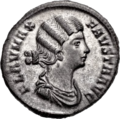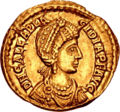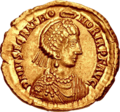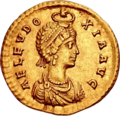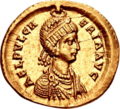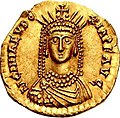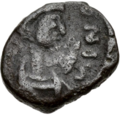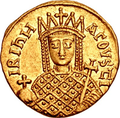Augusta ( Classical Latin: [au̯ˈɡʊsta] ; plural Augustae; Greek : αὐγούστα) [1] was a Roman imperial honorific title given to empresses and women of the imperial families. It was the feminine form of Augustus . In the third century, Augustae could also receive the titles of Mater Senatus ("Mother of the Senate"), Mater Castrorum ("Mother of the Camp"), and Mater Patriae ("Mother of the Fatherland").[ citation needed ]
Contents
- Principate period
- Julio-Claudian dynasty
- Flavian dynasty
- Nerva–Antonine dynasty
- Year of the Five Emperors
- Severan dynasty
- Crisis of the Third Century
- Dominate period
- Tetrarchy
- Constantinian dynasty
- Valentinianic dynasty
- Theodosian dynasty
- Leonid dynasty
- Byzantine period
- Justinian dynasty
- Heraclian dynasty
- Isaurian dynasty
- Nikephorian dynasty
- Amorian dynasty
- Macedonian dynasty
- Komnenos dynasty
- Doukid dynasty
- Palaiologos dynasty
- See also
- References
- Citations
- Sources
- External links
The title implied the greatest prestige. Augustae could issue their own coinage, wear imperial regalia, and rule their own courts. [1]
Agrippina, the wife of Claudius, was the first living wife of the emperor in Roman history to receive the title of Augusta, a position she held for the rest of her life, ruling with her husband and son.[ citation needed ]
In the third century, Julia Domna was the first empress to receive the combined title Pia Felix Augusta after the death of her husband Septimius Severus, which may have implied greater powers being vested in her than was usual for a Roman empress mother. In this official position and honor, she accompanied her son on an extensive military campaign and provincial tour. [2]


































